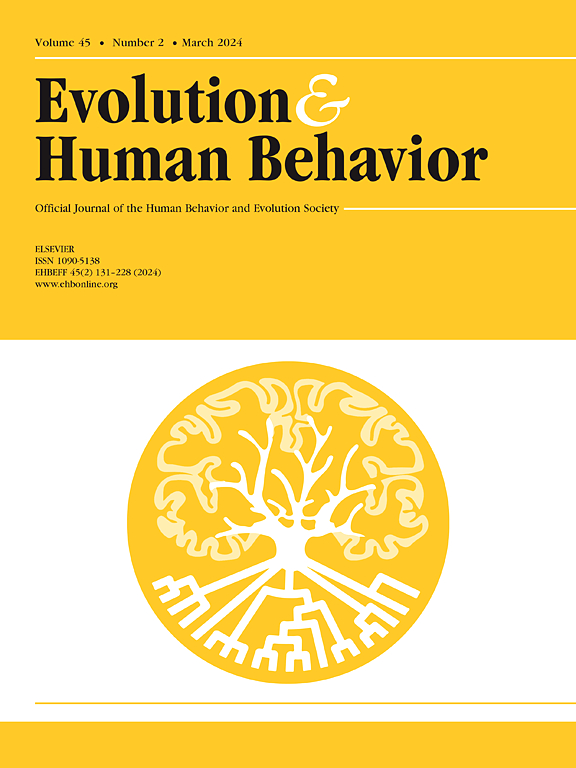深度神经网络生成的面部指标克服了以往方法的局限性,并能预测人与人之间的吸引力
IF 3.2
1区 心理学
Q1 BEHAVIORAL SCIENCES
引用次数: 0
摘要
在这里,我们将深度神经网络(人工智能的一种形式)作为量化面部特征(如平均值、男性气质和相似度)的一种新方法。以前的方法都是通过主观评分或客观地标方法来量化面部特征,这些方法忽略了我们用来感知面部的许多信息(如肤色和对比度、头发、眼睛颜色等)。我们从 682 名快速约会参与者那里获得了面部图像以及对面部吸引力和亲切程度的亲身评价。我们发现,与通过手动和自动地标得出的面部测量结果相比,通过神经网络得出的面部测量结果同样可以预测当面评分。利用神经网络得出的测量结果,我们发现了男性阳刚之气具有吸引力的有力证据,以及男性阳刚之气具有同类偏好的一些证据。过去关于面部相似性作为亲社会性线索的研究结果也得到了支持。神经网络和地标测量之间的相关性显著但较小,我们发现神经网络测量捕捉到了脸型以外的信息。在测量男性气质时,神经网络测量与面部俯仰(头部倾斜)几乎没有相关性,这克服了地标测量的一个主要局限性,地标测量与面部俯仰有很大的相关性。本文章由计算机程序翻译,如有差异,请以英文原文为准。
Deep neural networks generate facial metrics that overcome limitations of previous methods and predict in-person attraction
Here we introduce deep neural networks (a form of artificial intelligence) as a novel method for quantifying facial characteristics such as averageness, masculinity, and similarity. Previous methods have quantified facial characteristics using subjective ratings, or objective landmark methods which ignore much of the information we use to perceive faces (e.g. skin colour and contrast, hair, eye colour). We obtained facial images and in-person ratings of facial attractiveness and kindness from 682 speed-dating participants. We find that facial measures derived from neural networks similarly predict in-person ratings compared to facial measures derived from both manual and automatic landmarks. Using neural network-derived measures, we find robust evidence for the attractiveness of masculinity in males, as well as some evidence for assortative preferences for masculinity. Past findings were supported regarding facial similarity as a cue of prosociality. Correlations between neural network and landmark measures were significant but small, and we found that neural network measures captured information beyond face shape. Neural network measures of masculinity had little to no correlation with facial pitch (head tilt) on measures of masculinity, overcoming a major limitation of landmark measures, which were substantially correlated with facial pitch.
求助全文
通过发布文献求助,成功后即可免费获取论文全文。
去求助
来源期刊

Evolution and Human Behavior
生物-行为科学
CiteScore
8.30
自引率
9.80%
发文量
62
审稿时长
82 days
期刊介绍:
Evolution and Human Behavior is an interdisciplinary journal, presenting research reports and theory in which evolutionary perspectives are brought to bear on the study of human behavior. It is primarily a scientific journal, but submissions from scholars in the humanities are also encouraged. Papers reporting on theoretical and empirical work on other species will be welcome if their relevance to the human animal is apparent.
 求助内容:
求助内容: 应助结果提醒方式:
应助结果提醒方式:


